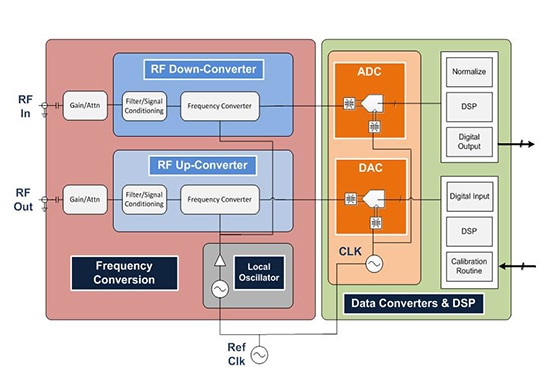The "Death of the Downconverter"? Not Just Yet
The impact of converting analog signals to digital form is one of the greatest advances the electronics industry has ever achieved. Although today almost every consumer, industrial, commercial, and military system depends on this capability, one of the last remaining outliers is directly converting analog signals at microwave frequencies into digital data streams without using large amounts of intervening microwave hardware (i.e., downconverters).
At lower frequencies, this has been possible for some time with high-resolution and dynamic range, but above a few gigahertz it has remained elusive unless lower performance could be tolerated. However, systems and even board-level products have recently become available that can perform “direct-to-digital” conversion at frequencies up to at least 6 GHz. Precisely how high in frequency this can actually be accomplished is known only to those with a “need to know” within converter and instrument manufacturers and DoD –but it’s probably a lot higher.

This is (or should be) of interest to manufacturers of microwave downconverters since the higher in frequency direct conversion can be performed the fewer downconversion stages are required. If you could directly capture and digitize signals at 20 GHz at the antenna, whole blocks of front end could be eliminated. The devil, as always, is in the details. When you capture and digitize 20 GHz of spectrum over even a very short period, you end up with an astonishing amount of data.
The resources required to rapidly gain something useful from it are formidable indeed, but if only signals of interest are captured, the capture file can be reduced by orders to make it more manageable. Ironically, separating this spectral wheat from the chaff can also be achieved with fast, broadband microwave tuners coupled with high-speed processors or FPGAs, bringing microwave hardware back in the picture. So while digital converters continue to edge upward in bandwidth, microwave hardware will be difficult to dislodge and projections of the death of the microwave downconverter are arguably premature.